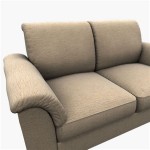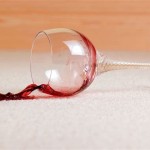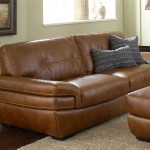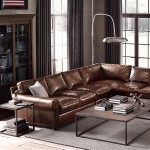Sofa Seat Support: Understanding Construction, Materials, and Maintenance
Sofa seat support is a critical factor determining the comfort, longevity, and overall quality of a sofa. The underlying support system directly influences how the cushions feel, how well the sofa maintains its shape over time, and how evenly weight is distributed. A poorly designed or constructed support system can lead to sagging cushions, uneven wear, and ultimately, a diminished lifespan for the sofa. This article delves into the components of sofa seat support, exploring the materials commonly used, the construction methods employed, and the recommended maintenance practices to ensure optimal performance and longevity.
The primary function of sofa seat support is to provide a stable and resilient platform for the seat cushions. This platform must be strong enough to withstand repeated use and varying weights without collapsing or losing its structural integrity. The design should also consider the intended use of the sofa. A sofa intended for frequent lounging and heavy use will require a more robust support system than one intended for occasional seating in a formal living room.
Understanding the different elements that contribute to sofa seat support empowers consumers to make informed choices when purchasing furniture. It also allows for better maintenance and potential repairs, extending the life of the sofa and maximizing its value.
Understanding the Frame: The Foundation of Sofa Seat Support
The sofa frame is the structural foundation upon which the entire sofa is built. Its primary purpose is to provide a rigid framework that supports the seat, back, and arms. The frame's material, construction, and joinery methods significantly impact the overall strength and stability of the sofa, and consequently, the effectiveness of the seat support system.
Hardwoods, such as oak, maple, and ash, are commonly used for high-quality sofa frames due to their strength and durability. These woods are resistant to warping and cracking, providing a stable platform for the seat support. Softwoods, like pine and fir, are less expensive but also less durable. They are often used in lower-priced sofas or in areas of the frame that do not bear significant weight. The choice of wood dictates the long-term performance of the sofa.
The construction method of the frame is just as important as the material. Corner blocking, where blocks of wood are glued and screwed into the corners of the frame, significantly increases its rigidity and prevents racking (the tendency for the frame to twist or distort). Dovetail joints, which interlock two pieces of wood, provide exceptional strength and are often used to connect frame components. Staples and nails are generally considered less desirable than screws and glue, as they are more prone to loosening over time.
A well-constructed frame should be square and true, meaning that its angles are precise and its surfaces are level. Any deviations from these standards can compromise the seat support and lead to uneven wear on the cushions. During purchase, it's advisable to inspect the frame for any signs of damage or poor construction. Checking the corner joints and feeling for any wobble can indicate the overall quality of the frame.
The Role of Springs: Providing Resiliency and Comfort
Springs are a crucial element of sofa seat support, providing the necessary resiliency to absorb weight and maintain the shape of the seat. Several types of springs are commonly used, each with its own characteristics and performance attributes.
Eight-way hand-tied springs are considered the gold standard in sofa seat support. In this system, individual coil springs are tied together in eight directions using twine. This intricate process distributes weight evenly across the springs, providing exceptional comfort and preventing sagging. Due to the labor-intensive nature of the process, sofas with eight-way hand-tied springs are generally more expensive.
Sinuous springs, also known as no-sag springs, are S-shaped metal wires that run horizontally across the frame. They are attached to the frame with clips or brackets. Sinuous springs are a more affordable alternative to eight-way hand-tied springs. While they offer good support, they may not provide the same level of comfort or durability as the hand-tied system. The gauge (thickness) of the sinuous spring is a key factor influencing its strength and weight capacity. Thicker gauges provide better support and are less likely to sag over time.
Drop-in coil springs are pre-assembled units consisting of coil springs attached to a metal frame. These units are then installed into the sofa frame. Drop-in coil springs offer a balance between cost and performance. They are easier to install than eight-way hand-tied springs, but they may not provide the same level of customization or fine-tuning. The quality of the springs within the drop-in unit will determine its overall performance.
The choice of spring system depends on the desired level of comfort, the budget, and the intended use of the sofa. Sofas intended for heavy use and long-term comfort will benefit from higher-quality spring systems, while those intended for occasional use may suffice with a more affordable option.
Webbing and Padding: Enhancing Comfort and Preventing Wear
Webbing and padding are additional layers of support that contribute to the overall comfort and longevity of a sofa seat. Webbing provides a flexible foundation for the cushions, while padding adds cushioning and protects the springs from wear.
Webbing is typically made from woven nylon or polypropylene fibers. It is stretched across the frame and attached with staples or clips. The spacing and tension of the webbing affect the firmness and support of the seat. Tightly spaced webbing provides a firmer seat, while more loosely spaced webbing offers a softer feel. High-quality webbing is resistant to stretching and sagging, ensuring that the seat maintains its shape over time. Rubber webbing is sometimes used, offering good elasticity and durability, but it can be more expensive.
Padding is typically made from foam, fiberfill, or a combination of both. It is placed between the springs or webbing and the seat cushions to provide additional cushioning and protect the springs from wear. High-density foam provides excellent support and is resistant to compression, making it a good choice for high-traffic sofas. Fiberfill is softer and more pliable but may not offer the same level of support as foam. The thickness and density of the padding influence the comfort and durability of the seat.
The combination of webbing and padding works together to create a comfortable and supportive seating surface. Webbing provides the initial support and distributes weight, while padding adds cushioning and prevents the springs from being felt directly through the cushions. The quality of the webbing and padding is crucial to the long-term performance of the sofa. Inferior materials can break down or compress over time, leading to sagging cushions and diminished comfort.
It is also essential to consider the type of fabric used on the sofa. A durable and tightly woven fabric will help to protect the underlying support system from wear and tear. A loosely woven fabric may allow the cushions to shift or sag, putting undue stress on the webbing and springs.
Maintenance and Prevention: Extending the Life of Sofa Seat Support
Proper maintenance and preventative measures are crucial for extending the lifespan of sofa seat support. Regular cleaning, cushion rotation, and addressing minor issues promptly can prevent significant damage and ensure that the sofa remains comfortable and supportive for years to come.
Regular vacuuming is essential for removing dust, dirt, and debris that can accumulate on the sofa and in the crevices between the cushions. This helps to prevent the buildup of allergens and keeps the fabric looking its best. Spills should be cleaned up immediately to prevent staining and damage to the fabric and underlying support system. The manufacturer's cleaning instructions should always be followed to avoid damaging the fabric or upholstery.
Cushion rotation is a simple yet effective way to distribute wear evenly across the cushions. This helps to prevent certain areas from becoming compressed or worn out more quickly than others. Cushions should be rotated regularly, ideally every few months. If the cushions are reversible, flipping them over is also recommended.
Addressing minor issues promptly can prevent them from escalating into more significant problems. Loose screws or staples should be tightened or replaced immediately. Sagging cushions can often be revitalized by adding more padding or replacing the foam inserts. If the springs are sagging or broken, they should be repaired or replaced by a professional upholsterer as soon as possible. Ignoring these issues can lead to further damage and ultimately shorten the lifespan of the sofa.
Avoiding excessive weight or pressure on any one area of the sofa is also important. Repeatedly sitting in the same spot or placing heavy objects on the cushions can cause them to compress or sag prematurely. Spreading weight evenly across the seat will help to maintain its shape and support.
Additionally, consider the placement of the sofa in the room. Direct sunlight can fade the fabric and damage the upholstery. High humidity can promote the growth of mold and mildew. Position the sofa away from direct sunlight and ensure adequate ventilation to prevent these issues.

Furniture Fix Seat And Cushion Support Lift Repair Six Interlocking Panels Com

67 Inch Couch Cushion Support Board Foldable Sofa Seat Saver

Evelots Couch Supports For Sagging Cushions Sofa Cushion Support 66 Inches Extra Thick Sy Pressed Wood Board Com

4 Ways To Fix Sagging Sofa Cushions Wikihow

Couch Cushion Support Sofa For Sagging Seat 19 7 034 X 58 67

Sagging Couch Support Under Cushion Sofa Seat Saver Fordable Board For 21 X 16 Com

Weekinend Couch Cushion Support 18 W X 44 L For Sagging Loveseat Cushions Thickened Bamboo Board Sofa Protect Prolong Life Yahoo Ping

Pojifi Thickened Bamboo Sofa Cushion

Homeprotect Couch Supports For Sagging Cushions 20x67 Sofa Cushion Support Boa

Kebe Extension Couch Support Insert Sagging Sofa Recliner Cushion Wood Seat Furniture Savers Extend The Life Of Your Black 20 X 67 Yahoo Ping








